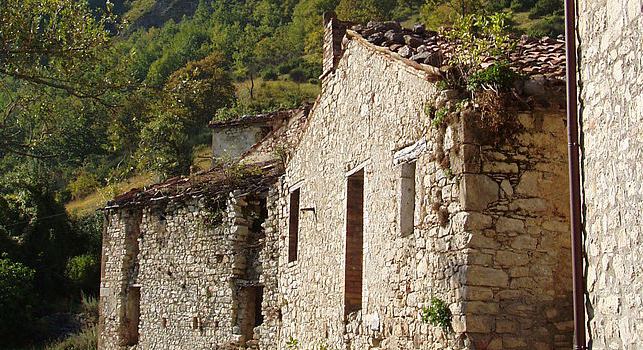Bologna, a city in Italy renowned for its rich history and impressive architectural marvels, is home to a captivating array of towers. These towers, dating back centuries, hold secrets that unveil the city’s intriguing past. Understanding the history, significance, and cultural importance of Bologna’s towers provides a fascinating glimpse into the city’s heritage. This article explores the towers of Bologna, delving into their origins, famous examples, hidden secrets, and their role in shaping the city’s culture and urban development. From the construction techniques to the legends surrounding them, Bologna’s towers encapsulate the essence of the city, making them a must-see for anyone visiting this historic Italian gem. Join us as we venture into Bologna’s towers and unravel their enigmatic allure.
The History of Bologna’s Towers
Discover the captivating tale behind Bologna’s majestic towers! Uncover the secrets of their creation and their profound role in shaping the history of this enchanting city. From the origins of tower construction to their immense significance, join us on a journey through time as we explore the rich history of Bologna’s towers. Prepare to be fascinated by the stories hidden within these iconic structures that have stood the test of time.
The Origins of Tower Construction in Bologna
The origins of tower construction in Bologna can be traced back to the Middle Ages. These towers, known as “The Origins of Tower Construction in Bologna,” were built by noble families as symbols of power and wealth. The construction of “The Origins of Tower Construction” in Bologna was influenced by various factors, such as the strategic location of the city and the need for defense during turbulent times. The towers, which were part of “The Origins of Tower Construction in Bologna,” were typically made of brick and had thick walls for protection. Today, “The Origins of Tower Construction in Bologna” still stand as iconic landmarks and reminders of Bologna’s rich history. Understanding “The Origins of Tower Construction in Bologna” provides valuable insights into the city’s medieval past.
The Significance of Towers in Bologna’s History
The significance of towers in Bologna’s history is immense, as they played a crucial role in the city’s development and cultural identity. Built during the Middle Ages, these tall structures served multiple purposes including defense, symbolizing wealth and power, and providing an excellent vantage point for observation. The Asinelli and Garisenda towers, which are famous architectural landmarks, are a testament to the city’s rich heritage. As visitors walk through the streets of Bologna, they can truly appreciate the historical and cultural importance that these towers hold, continuing to captivate and intrigue tourists from all over the world.
Famous Towers of Bologna
Did you know that Bologna, Italy is not only famous for its culinary delights, but also for its remarkable towers? In this section, we’ll uncover the intriguing stories and secrets behind two iconic towers in Bologna: the majestic Asinelli Tower and the leaning Garisenda Tower. Get ready to be mesmerized by their history, architectural marvels, and the fascinating legends that surround them. So, let’s embark on a journey through time and explore the renowned towers that have become symbols of this enchanting city!
Asinelli Tower
The Asinelli Tower is one of the most famous towers in Bologna, Italy. Standing at a height of 97.2 meters, it is the tallest medieval tower in the city. Built between 1109 and 1119, the tower was originally part of a pair, with the Garisenda Tower being its companion. While the Garisenda Tower was partially demolished due to its leaning structure, the Asinelli Tower still stands strong. Visitors can climb its 498 steps to the top, where they can enjoy panoramic views of Bologna and its surrounding areas. A pro-tip for visitors: It is recommended to visit early in the morning to avoid long queues.
Garisenda Tower
Garisenda Tower is one of the famous towers in Bologna, Italy. It is known for its unique leaning appearance, similar to the famous Leaning Tower of Pisa. Standing at around 48 meters tall, it is shorter than its neighboring Asinelli Tower. What it lacks in height, it compensates for in charm and historical significance. Despite its inclination, the tower has remained stable over the years and has become an iconic landmark of Bologna. Visitors can admire Garisenda Tower and learn about its fascinating history and architectural details while exploring the city.
The Secrets of Bologna’s Towers
Bologna’s towers hold fascinating secrets waiting to be discovered. Unveiling hidden rooms and passages, this section takes you on a journey through the intriguing history of these ancient structures. Prepare to be captivated by the legends and myths that enshroud Bologna’s towers, as we delve deep into the enchanting tales that have been passed down through generations. Get ready to uncover the mysteries lurking within these iconic landmarks.
Hidden Rooms and Passages
Hidden rooms and passages contribute an element of enigma and fascination to Bologna’s towers. These concealed spaces were frequently utilized for various purposes, including storage, escape routes, or even as hideaways during periods of turmoil. Some towers possess hidden rooms that are only accessible through narrow staircases or hidden doors, while others boast subterranean tunnels that connect multiple towers. One captivating anecdote entails the Torre Prendiparte, which harbors a concealed passageway leading to the adjacent tower. Allegedly, Leonardo da Vinci himself utilized this covert route during his visit to Bologna.
Legends and Myths Surrounding the Towers
Bologna’s towers are steeped in legends and myths, adding to their allure and intrigue. Hidden Rooms and Passages: Some towers are said to contain secret rooms and hidden passages, like the Torre degli Asinelli, which supposedly holds a secret underground room. Supernatural Encounters: There are tales of ghosts haunting certain towers, such as the Torre della Ghirlandina, with sightings and eerie occurrences reported over the years. Mystery and Suspicion: Many towers have mysterious pasts, giving rise to various myths and speculations about their origins and purposes. Folklore and Legends: Bologna’s towers have inspired a rich tapestry of folklore, including tales of forbidden love, cursed tower residents, and medieval knights.
- Legends and myths surrounding the towers:
- Hidden Rooms and Passages: Some towers are said to contain secret rooms and hidden passages, like the Torre degli Asinelli, which supposedly holds a secret underground room.
- Supernatural Encounters: There are tales of ghosts haunting certain towers, such as the Torre della Ghirlandina, with sightings and eerie occurrences reported over the years.
- Mystery and Suspicion: Many towers have mysterious pasts, giving rise to various myths and speculations about their origins and purposes.
- Folklore and Legends: Bologna’s towers have inspired a rich tapestry of folklore, including tales of forbidden love, cursed tower residents, and medieval knights.

Stop reading, start speaking
Stop translating in your head and start speaking Italian for real with the only audio course that prompt you to speak.
When exploring Bologna’s towers, allow yourself to be transported into a world of legends and myths, igniting your imagination and deepening your connection with the city’s fascinating history.
The Cultural Importance of Bologna’s Towers
Bologna’s towers stand tall, not just as magnificent architectural marvels, but as symbols deeply rooted in the city’s culture. In this section, we’ll uncover the cultural significance of these towering structures. From serving as symbols of power and wealth to playing a role in the urban development of Bologna, each sub-section will shed light on the diverse aspects that make these towers integral to the city’s rich heritage. So, let’s unveil the hidden secrets of Bologna’s towers and explore their profound cultural importance.
Towers as Architectural Symbols
Towers in Bologna are not just magnificent structures, but also hold significant architectural symbolism. They serve as architectural symbols, representing power, wealth, and the social status of noble families during the Middle Ages. These structures showcased the might and influence of prominent families and functioned as a symbol of their prestige. The taller the tower, the more impressive the family’s social standing. Not only did these towers serve as architectural marvels, they also contributed to shaping the city’s skyline, creating a unique and recognizable silhouette. Today, Bologna’s towers continue to be a powerful symbol of the city’s rich history and cultural heritage.
Towers and Urban Development
Towers played a significant role in the urban development of Bologna during the Middle Ages. They were not just architectural symbols but also reflections of the city’s social and economic status in terms of Towers and Urban Development. The construction of towers was a means for noble families to display wealth and power while contributing to the city’s Urban Development. As the city grew, these towers became landmarks and points of interest for locals and tourists alike, shaping the city’s landscape and contributing to its cultural heritage in terms of Towers and Urban Development. A true story about Bologna’s towers and urban development is the construction of the Asinelli Tower, which was started in 1109 and took approximately eight years to complete. This tower stands tall as a reminder of the city’s rich history and architectural marvels, showcasing the impact of Towers and Urban Development on the city of Bologna.
Frequently Asked Questions
What are the seven secrets of Bologna?
The seven secrets of Bologna are a collection of hidden and interesting facts about the city that only locals know. They include the presence of subterranean canals, the use of cannabis as protection, the perspective-changing trick in the statue of Neptune, the presence of arrows on ancient medieval beams, the existence of a “wireless phone” in the vault below Palazzo del Podestà, and a fresco called “Canabis Protectio” that refers to the hemp trade in Bologna.
How can I discover the secrets of Bologna?
You can discover the secrets of Bologna by taking the Seven Secrets tour offered by Bologna-Guide.com. This sightseeing tour takes visitors to the main points of interest in the city and provides the stories behind each secret. It is a popular choice among tourists as it allows them to explore the mysterious side of Bologna and gain a deeper understanding of its culture and history.
Are the secrets of Bologna well-known?
While some of the secrets of Bologna are well-known, there are also a few that remain elusive. These lesser-known secrets add an element of excitement and intrigue to the city’s history and are often discovered by curious tourists who embark on a treasure hunt to find them.
What is the significance of the statue of Neptune in Bologna?
The statue of Neptune in Bologna, designed by the Flemish sculptor Giambologna, holds a unique secret. Standing on a black stone called Pietra della Vergogna, the thumb of Neptune appears to be an erect phallus. This optical illusion was created as revenge against the Vatican, which did not allow the sculptor to make Neptune’s genitals larger. It is a baffling physics experiment that adds a touch of r-rated curiosity to the city.
Where can I see the remnants of Bologna’s subterranean canals?
There are several locations in Bologna where you can see remnants of the subterranean canals that once existed in the city. One window in Via Piella 5 allows visitors to catch a glimpse of an old canal. Other places where the canals can be seen include Via Oberdan 32 and Via Malcontenti 4/c. Exploring these sites gives you a glimpse into Bologna’s past and its resemblance to Venice during the Middle Ages.
What are the main attractions of Bologna besides its secrets?
Bologna has many attractions besides its secrets. The city is known for its grand palaces, UNESCO-designated arcades, delicious local food, and historic sites such as the Bologna Duomo and San Petronio Basilica. Piazza Maggiore, with its famous Fountain of Neptune, is a key stopping point on any Bologna itinerary. The city also offers exciting cultural treasure hunts and Bologna walking tours for first-time visitors to explore its unique quirks and hidden gems.




